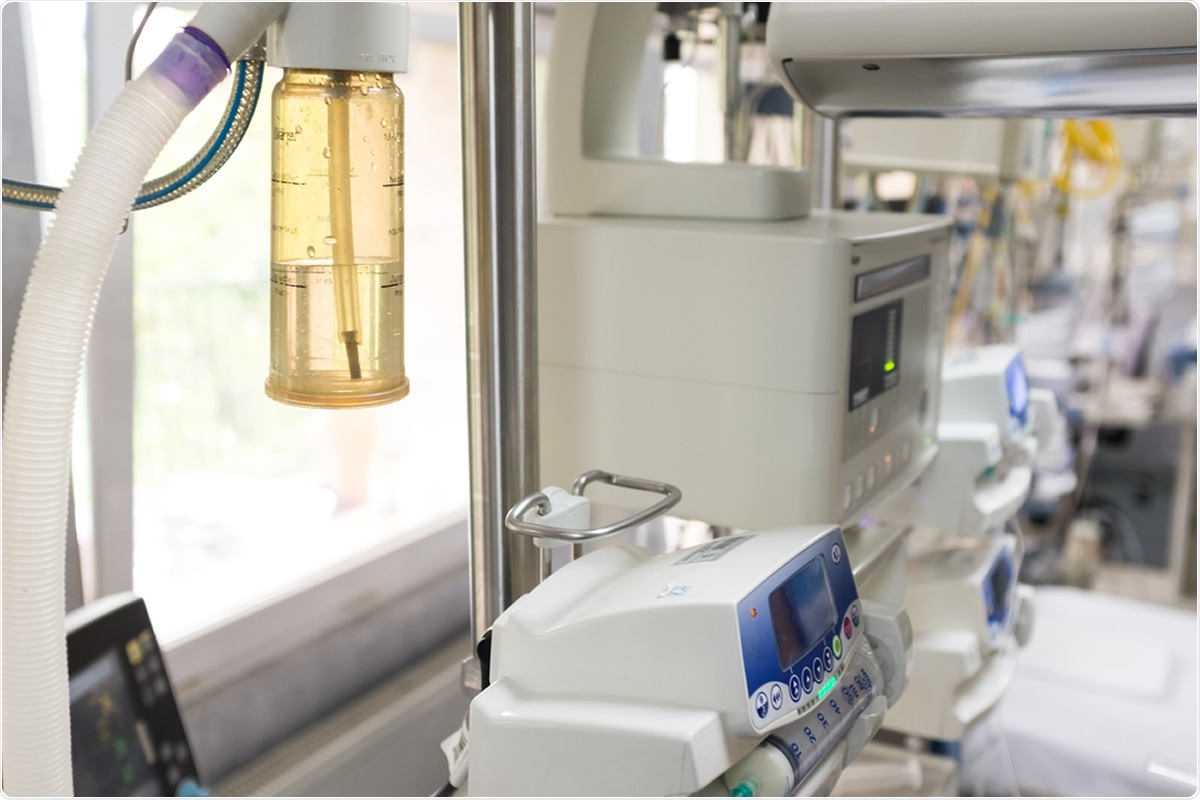Early in the pandemic, children were thought to be spared by the coronavirus disease (COVID-19), with a majority experiencing mild or no symptoms at all. The high-risk populations include the elderly, those with underlying health conditions such as diabetes, heart disease, and hypertension, and those who are immunocompromised.
Now, new research has found that children are still at a high risk of developing severe COVID-19. The study shows that one-third of children hospitalized due to COVID-19 were admitted to intensive care units (ICU), a rate similar to adults.

Image Credit: Cryptographer / Shutterstock
The study
The study, which was a collaborative effort by the American Academy of Pediatrics and the Children’s Hospital Association, analyzed data from 576 children below 18 years old from 14 states who were hospitalized for COVID-19 between March 1 and July 25.
The report, which can be seen in the Morbidity and Mortality Weekly Report by the CDC, shows that the hospitalization rate for children was 8 per 100,000 compared to 164.5 per 100,000 for adults. The team also found that the rate of pediatric hospitalizations increased throughout the study period.
In a nutshell, the rate was highest for children below the age of 2, at 25 per 100,000 children, compared to 4 per 100,000 for children between 2 and 4 years old, and six per 100,000 for children who are five years old to 18 years old.
The team also said that the average hospital stay was 2.5 days, based on medical chart reviews for 208 patients. About 33 percent were admitted to the ICU, and 6 percent required invasive mechanical ventilation. In adults, 32 percent were admitted to the ICU, while 19 percent needed invasive mechanical ventilation.
About 42 percent of the children who were hospitalized had an underlying medical condition, such as chronic lung disease of prematurity, and obesity.
Cases of COVID-19 in children
According to the report, the cumulative number of child COVID-19 cases in the United States was 380,174 confirmed cases, which accounts for 9.1 percent of all cases. Overall, the rate of confirmed cases was 501 cases per 100,000 children in the population.
Between July 9 and August 6, the country has reported 179,990 new cases, which is a 90-percent increase in child cases in over four weeks. In terms of hospitalization, 0.3 to 8.9 percent of all cases of COVID-19 in children have resulted in hospitalization, and about 0 to 0.4 percent of all COVID-19 hospitalizations were children. An estimated 0 to 0.4 percent resulted in deaths were children.
New cases in children
In the United States, the report also shows that more than 97,000 children have tested positive for COVID-19 as more schools plan to reopen. Thousands of students will return to their classrooms this week, despite the alarming rise of cases in the country. The U.S. has now topped 5 million COVID-19 confirmed cases.
In the last two weeks, the researchers found a 40 percent increase in child coronavirus cases in various states and cities.
Meanwhile, New York Governor Andrew Cuomo announced that school districts in the state could resume face-to-face classes in the fall as the transmission rates have decreased. Some schools have already reopened in-person classes in some states in the South, including Georgia.
“It will be a little hard to sort out the degree to which a lot more kids are getting infected and the degree to which our testing capacity has gone up. What we can say is that it’s not particularly surprising given the large increase in cases we’ve seen nationally overall,” Sean O’Leary, a member of the American Academy of Pediatrics and professor of pediatric infectious diseases at the University of Colorado, said in a statement.
In other countries, some schools are planning to reopen face-to-face classes, while some countries opted for online learning as a new modality to prevent the spread of the virus. So far, there are more than 19.94 million confirmed cases of COVID-19 across the globe, with more than 732,000 deaths.
Apart from the U.S., other countries have reported a high number of cases, including Brazil, with more than 3 million cases, India with more than 2 million cases, and Russia, with more than 890,000 cases.